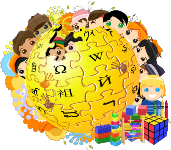 Growing pains are a very common complaint in young children and adolesents. Approximately 4-50% of all children and adolesents from the age of 5 to 14 years have complaints of some type of growing pains. Growing pains are usually a result of rapid growth. Inflammation can occur around the site of tendon insertion. The tendon will also pull on the growth plate, causing inflammation and pain. "Bone" aches and pains are common in the evening time and when the child is trying to sleep. Young athletic children will also experience increased pain during times of increased activity. Common causes of growth related pain in young athletes is Osgood-Schlatter Disease and Sever's Disease.
Growing pains are a very common complaint in young children and adolesents. Approximately 4-50% of all children and adolesents from the age of 5 to 14 years have complaints of some type of growing pains. Growing pains are usually a result of rapid growth. Inflammation can occur around the site of tendon insertion. The tendon will also pull on the growth plate, causing inflammation and pain. "Bone" aches and pains are common in the evening time and when the child is trying to sleep. Young athletic children will also experience increased pain during times of increased activity. Common causes of growth related pain in young athletes is Osgood-Schlatter Disease and Sever's Disease.
Osgood-Schlatter Disease is the rupture of the growth plate at the tibial tuberosity. Every time there is a contraction of the quadriceps muscle (muscle in the front of the thigh), it causes a pulling force on the patella tendon which is attached to the tibial tuberosity (the bony area at the top of the shin). Following a growth spurt, repeated stress to the quadriceps muscle and its attachment point to the knee joint can cause tendon inflammation, pain and/or excess bone growth at the tendon attachment producing a visible bump.
Sever's Disease is a similar overuse problem that occurs during rapid growth periods, except it involves the growth plate at the heel of the foot. Increased weight bearing activities, such as running and jumping, over a tight heel tendon can cause increased stress on the back of the heel. Symptoms include tendon inflammation, pain and difficulty weight bearing through the heel.
Treatment for growing pain can include over-the-counter pain or anti-inflammatory medication, massaging the painful muscle or area, stretching and ice placed over the inflammed tendon. If your child is participating in any athletic activity, it is important for the child to have rest time in order for the area to heal. It is also important that your child participate in a supervised strengthening routine to help strengthen muscles and tendons. A Physical Therapist can provide the proper treatment education, preventative exercise and other techniques such as taping, that will allow for continued participation in atheltic activity throughout periods of growing pains.





